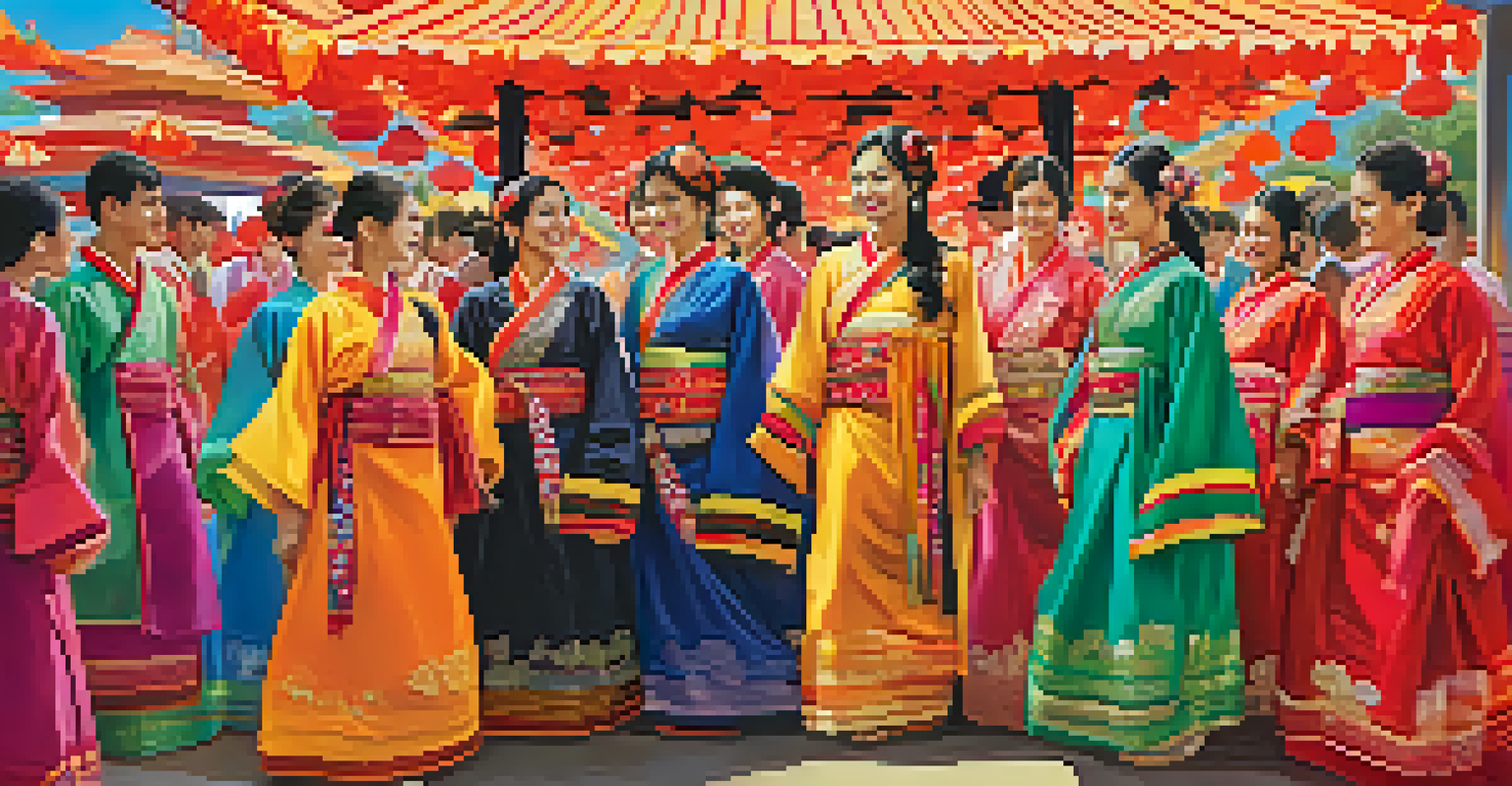Understanding Dress Codes: Respecting Cultural Norms

What Are Dress Codes and Why Do They Matter?
Dress codes are guidelines that outline acceptable attire for specific occasions. They help set the tone for events, whether formal, casual, or somewhere in between. Understanding these codes can enhance your confidence and ensure you fit in with the crowd.
Dress is a function of time and place.
Beyond aesthetics, dress codes often reflect cultural values and expectations. For instance, wearing traditional attire at a wedding might signify respect for the couple's heritage. By adhering to these guidelines, you show an appreciation for the cultural context of the event.
Moreover, understanding dress codes can help you avoid potential faux pas. Imagine showing up to a formal gala in casual wear; not only would you feel out of place, but it may also diminish the event's significance for others. A little effort in dressing appropriately goes a long way.
Decoding Formal Attire: What It Really Means
Formal attire is often the most complex of dress codes, with various interpretations across cultures. Generally, it includes suits for men and elegant dresses for women, but nuances vary. For example, black-tie events typically require a tuxedo and evening gown.

In some cultures, formal wear might include traditional garments, such as a kimono in Japan or a saree in India. Understanding these variations is crucial, as it demonstrates cultural respect and awareness. When in doubt, it’s wise to research the specific expectations for the event.
Dress Codes Enhance Confidence
Understanding dress codes helps you feel confident and ensures you fit in at various events.
Ultimately, formal attire is about making a statement of respect and seriousness towards the occasion. It’s not just about looking good; it’s about honoring the event’s significance and the people involved. So, next time you receive a formal invitation, take a moment to consider its cultural implications.
Casual Dress Codes: Striking the Right Balance
Casual dress codes offer more freedom, but they still come with guidelines. Whether it's a backyard barbecue or a casual Friday at work, understanding what 'casual' means is key. It can range from jeans and a t-shirt to smart casual, which might involve chinos and a polo.
Fashion is the armor to survive the reality of everyday life.
The challenge with casual attire is avoiding extremes. Wearing overly casual outfits, like gym clothes to a gathering, can come off as disrespectful. Conversely, dressing too formally can create an awkward vibe, so it's essential to gauge the event's atmosphere.
To navigate casual dress codes successfully, consider the venue and the people attending. If you're unsure, seeking inspiration from others' past outfits is a great way to gauge what's acceptable. Remember, casual doesn’t mean careless; it’s about looking put together while being comfortable.
Understanding Cultural Dress Codes Around the World
Cultural dress codes vary significantly across the globe, shaped by history, climate, and social norms. In some cultures, attire can symbolize identity, status, or adherence to tradition. For example, in many Middle Eastern countries, modest clothing is not just preferred but also respected.
When traveling or attending multicultural events, it's essential to research local customs. Wearing a cultural outfit is a beautiful way to honor that tradition, but it requires understanding its significance. Misusing cultural attire can lead to misunderstandings or offense.
Cultural Sensitivity Matters
Dressing with cultural awareness promotes inclusivity and shows respect for diverse traditions.
Engaging in cultural dress codes allows for a richer experience and deeper connections with others. Respecting these norms not only enhances your understanding but also fosters goodwill between diverse groups. Always approach cultural attire with sensitivity and a willingness to learn.
How to Communicate Dress Code Expectations Clearly
When hosting an event, clearly communicating the dress code is crucial. Use your invitations to specify what attire is expected, perhaps with examples. This clarity helps guests feel comfortable and ensures everyone enjoys the occasion without confusion.
Consider including a brief explanation of the dress code's cultural significance if applicable. For instance, if you’re hosting a traditional celebration, sharing its roots encourages guests to participate thoughtfully. This approach not only educates but also enriches the experience for everyone.
Additionally, be open to questions. Encourage guests to reach out if they’re unsure about their attire. A simple conversation can alleviate anxiety and ensure that everyone feels included and respected at your event.
Navigating Dress Codes in the Workplace
Workplace dress codes often reflect a company's culture and values. Some industries, like finance, lean towards formal attire, while tech companies may embrace a more casual approach. Understanding your workplace's expectations is key to making a positive impression.
Adhering to these codes can significantly impact your career advancement. Dressing appropriately signals professionalism and respect for your role and colleagues. It can also influence how others perceive your competence and seriousness about your position.
Workplace Attire Reflects Values
Adhering to workplace dress codes can significantly impact your professional image and career advancement.
When in doubt, observe your colleagues or seek guidance from HR. They can provide insights into unspoken rules or variations in dress codes for meetings or special events. Remember, dressing well can boost your confidence and help you feel more at home in your workplace.
The Importance of Dressing for Cultural Sensitivity
Dressing with cultural sensitivity is about more than just attire; it reflects respect and understanding. Wearing clothing that aligns with cultural norms helps promote inclusivity and fosters positive relationships. It's an acknowledgment of the diversity that enriches our communities.
Examples abound, from wearing a hijab in Muslim communities to donning a kilt at Scottish gatherings. These choices can show solidarity and appreciation for different cultures. However, it's essential to approach this with genuine intent, avoiding cultural appropriation.

Ultimately, being mindful of how we dress can lead to meaningful interactions and connections. It’s a simple yet powerful way to show respect for others and their beliefs. So, as you choose your outfit, consider the message it sends and the cultural context surrounding it.